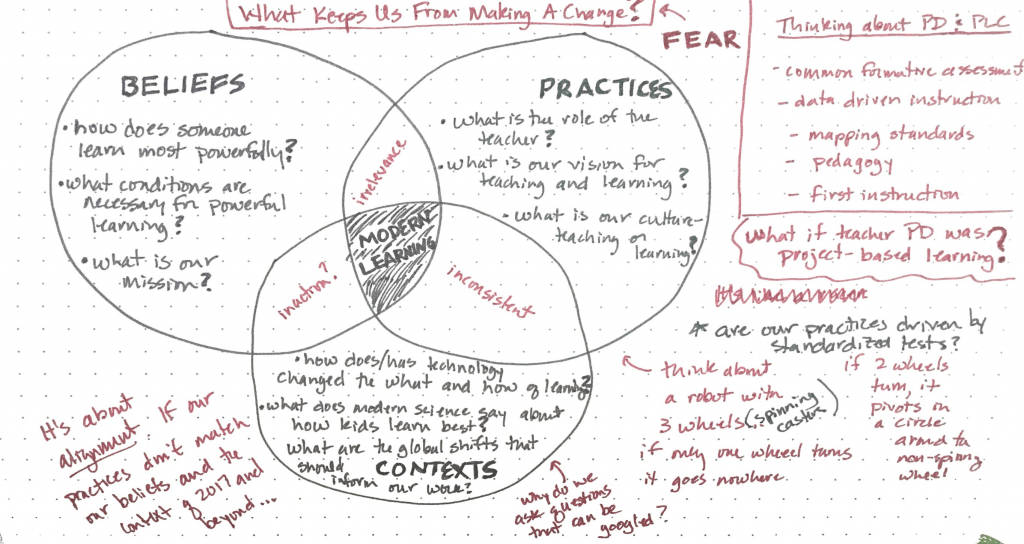Earlier in my career as an educator, I coached my high school’s fastpitch softball team. Then, as now, I believed the best way to make my team successful was to coach them in the skills and knowledge they needed to excel and then I let them go out and play. I was often asked (by parents, never the players) why I didn’t call pitches for my catchers. The answer was simple: It wouldn’t be in alignment with what I believed made my players the most successful.
What Does This Have to Do With Education?
Fast forward a couple of decades: I was invited to attend the SXSWEdu in Austin, TX and am lucky enough to see Will Richardson speak. What he said really stuck with me – so much so that I had to get it all out in a mind map to feel like I was truly understanding.

Will asked us to think about our beliefs, practices, and contexts. It’s only when the answers to questions exist in the intersection of all three “buckets” that we are in alignment. For instance, if what you believe lines up with what you practice, but not with the context of the world we live in, you risk irrelevance. If your beliefs and contexts are aligned, but they don’t inform your practice, you will be inconsistent in your message.
The example Will gave was powerful:
“In the context of our modern world, where our student’s future success depends on their ability to learn, unlearn and relearn and solve complex problems, ask educators what they believe about the conditions learners need to learn powerfully and deeply and you’ll hear: passion, self-determination, challenge, opportunities to explain their thinking, connections to their world, opportunities to deeply immerse in a topic. Juxtapose that with what we see all too often in practice: desks in rows, digital worksheets, compliance-based classroom management, compartmentalized courses of study (and the bells – lots of bells – that go with that) and even in schools & districts that have moved away from those antiquated practices, there is still the grandaddy of industrial-age practices: standardized tests.“
Clearly, that’s not aligned.
We want our students to shape a successful future. When we write out what students need to be as thinkers, what qualities we want them to possess, what we want them to walk away from our school with, we use adjectives like “critical thinkers,” “empathetic,” “creative,” “resilient.” We talk about 21st-century learners and how they are different than Industrial Age learners. And then we measure our success using Industrial Age tools. We can do better. We must do better. It’s time to align our practices with our beliefs in the context of the modern world our students will live in.
Want to keep up with new blog posts, tech tips, and other content? Subscribe below and receive an email when new content is posted here. As a thank you, we’ll send you a free Google Form + Google MyMaps activity you can use with your students tomorrow.
No spam, ever. No address selling either. Ever.
